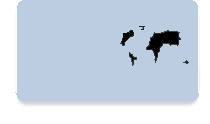

 Iran's fisheries Industry
Iran's fisheries Industry
The Islamic Republic of
Iran is the largest fishery producer in the region, with a 2 440 km coastline
along the Persian Gulf and Oman Sea, and a 740 km coastline in the north along
the southern part of the Caspian Sea. In addition, there are a number of freshwater
resources. With fisheries extending over two major sea areas, the fisheries of
Iran are diverse and include major demersal and pelagic resources in the marine
areas and major clupeid fisheries and a valuable (but falling off) sturgeon
fishery in the Caspian Sea.
Total capture fisheries production in 2014 was
reported as 627 180 tons. Capture fisheries in the Persian Gulf and Oman Sea
have more than doubled since 1998, reaching almost 536 000 tons in 2014. Inland
fisheries (including the Caspian Sea) reached a peak of 146 000 tons in 1999,
decreased to 51 000 tons in 2003, and in recent years stabilized around 85 000
tons per year. The Iranian Fishery Organization (Shilat; formerly Iranian
Fishery Company) is the main public institution in charge of fisheries and
aquaculture and has a clear mandate to manage the fishery and aquaculture
sectors and to preserve living aquatic resources
Aquaculture production has increased rapidly and
steadily from 27 000 tons in 1990 to 320 200 tons in 2014 representing
approximately 34 percent of total fish production in 2014. Aquaculture
production has been dominated by Chinese carps and rainbow trout grown in fresh
water. Mariculture is still small and is focusing on shrimp culture in coastal
ponds with annual production increased from 2 500 tons in 2006 to 22 500 tons
in 2014 accompanied by the shift from Indian white prawn to white leg shrimp
during 2007-2008. Aquaculture hatchery and nursery production also contribute
meaningfully to culture based fisheries and stock enhancement. Although
aquaculture development started only in the early 1980s in Iran, its growth has
been rapid in the Northern provinces and some of the southern coastal
provinces.
The total number of people employed in fisheries
has risen from 9 200 in 1993 to 186 900 by 2010, of which the number directly
employed in aquaculture was 35 900. The value of fisheries commodities exported
in 2014 was USD 157.9 million, while imports were valued at USD 171.9 million.
The average per capita consumption of fish amounted to 9.1 kg in 2011.
Although marine fishery production has
maintained an increasing trend since the 1980s, marine fish resources seem to
have reached their biological limits. The main issue for state fisheries policy
is how to implement a successful shift from fisheries to aquaculture.
Increasing per capita fish consumption is also a major policy goal of the
Government.
In recent years, Iran has needed to address some
major fish stock issues. Among these are declining demersal (and some pelagic)
resources in the Persian Gulf, overfishing of the important sturgeon fishery,
environmental degradation and an invasion of the Caspian Sea by an exotic comb
jelly which has reduced the large clupeid fisheries in the area. In the Caspian
Sea, all the five major sturgeon species are currently classified as
"critically endangered” by the International Union for Conservation of Nature
(IUCN) in its Red List of Threatened Species. There is an urgent need for the
five range states of the Caspian Sea to develop a common strategy to rebuild
sturgeon stocks. Iran is certainly a key player and needs to act proactively.
The Fifth Iranian Fisheries Development Program,
with a focus on developing and strengthening sustainable aquaculture, started
in April 2011. With successful implementation of this program, the final
production of aquaculture is expected to 430 150 tons in 2014.To achieve this
goal, stringent regulations and responsible management of aquaculture is
essential. Iran did not ratify the 1982 United Nations Convention on the Law of
the Sea (UNCLOS), but made a declaration. The country ratified however in April
1998 the UN Fish Stocks Agreement. Iran is a founding Member of the Regional
Commission for Fisheries (RECOFI) that is an Article XIV body under the FAO
Constitution. Additionally Iran is a Member of the Indian Ocean Tuna Commission
(IOTC), Network for Aquaculture Centers in Asia and the Pacific (NACA) and
Marketing Information and Advisory Service for Fish Products in the
Asia/Pacific Region (INFOFISH).
Under the aegis of FAO/RECOFI, Iran is an active
Member of the tripartite initiative on fisheries management cooperation in the
Northern area of the Persian Gulf involving also Iraq and Kuwait, the field
program of which is currently being developed.
The long Iranian coastline, coupled with a
diversified continental climate suitable for various types of aquaculture,
makes Iran a large producer of fish. There are three fisheries sectors in the
country:
-The Southern Fishery (the Persian Gulf and Gulf
of Oman);-The Northern Fishery (the Caspian Sea); and Inland fisheries and
aquaculture.
In 2014, the three sources produced 947 000 tons
of fish, with 536 000 tons (56.5%) from southern capture fisheries; 39 600 tons
(4.2%) from Northern capture fisheries, inland capture fisheries (52 000 tons)
and aquaculture (320 000 tons), both together provide 372 000 tons (39.3%)
respectively. However, possibilities to further increase the catch from wild
natural resources are very limited as stocks are subject to over-fishing,
pollution and illegal fishing operation. Attempts have been made, and some are
in progress, to improve matters through fish stock enhancement programs,
conservation of fish stocks, fisheries management and a buy-back scheme
intended to reduce fishing effort by withdrawing surplus fishing licenses. In
contrast, the further development of aquaculture is promising due to the vast
land and water areas as well as suitable and diverse climatic conditions.





